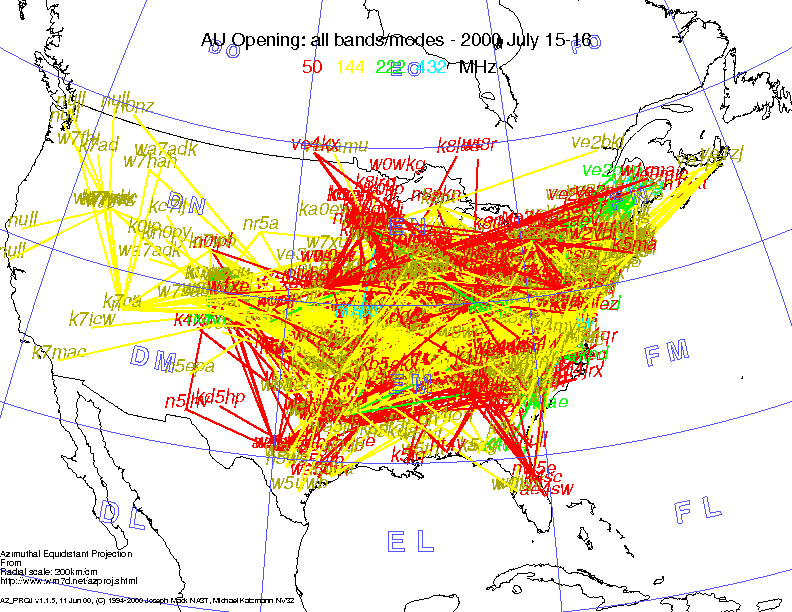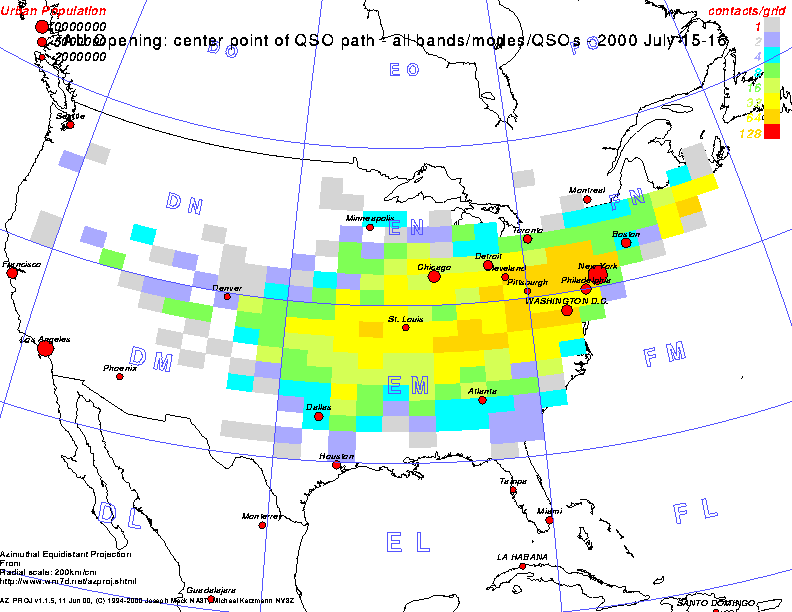


Pete K9PW thought the 4 band animation (above) showed movement of the aurora, with opening started in the north, moving south during the opening and then moved north as it was closing. An estimate of the position of the auroral curtain is the center point of each QSO. This point is not a good estimate as it is the reflection point only for direct E-W paths. Still it's the information we have. For N-S paths the reflection point is north of the center point. The true position of the curtain then will be at the center point or further north. This map shows the center points for the same QSOs shown in the 4 band animation (above).

The opening starts (1900-2000UTC) with a small number of operators in gridsquare FN and EN. At 2000 with AU occuring on all bands, QSOs are seen all over the map. At the end of the main AU opening (0000 16 Jul 2000) the contact rate gradually decreases over an hour, and activity retreats to only FN and EN. From 0200-0400UTC 16 Jul 2000 (the minor opening), all activity in in EN. It would be interesting if anyone in EN/FN noted anything different about propagation in the period 1900-2000 15Jul and 0200-0400 16 Jul (e.g. was the second opening really AU or was it tropo/terrestrial?)
As explained above the information in this map is confounded by the data from N-S paths. Is there a better estimate of the position of the curtain? I don't have beam heading information for many of the contacts (this can be solved by rewarding the exchange of beam headings when claiming an AU QSO) so we have to get the location of the curtain by other methods. The reflection point is half way between operators for E-W paths. The paths for 2m QSOs >1100km, with E-W paths (i.e. beam headings 45-135° and 225-315°) has already been calculated (review the animation looking only at the E-W paths). While this map includes many contacts that aren't exactly E-W, there isn't any more indication of movement of the curtain than from the map of the center points (which includes the confounding data from the N-S paths).
The opening expands so quickly, that there appears to be no movement in the auroral curtain: the opening occurs everywhere at the same time. At the end, activity closes out in the south leaving only the northern people in the opening. The changes in the position of the curtain only occur during the short opening and closing phases.

(C) Joseph Mack 2000-2002, Joe NA3T, jmack (at) wm7d (dot) net, http://www.wm7d.net/azproj.shtml
Previous Next Table of Contents
